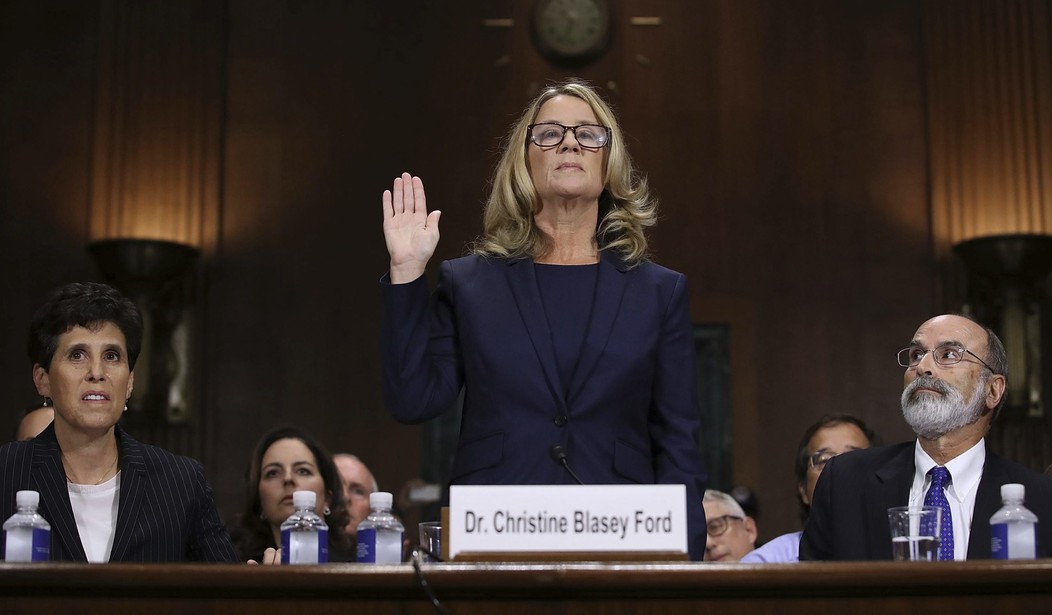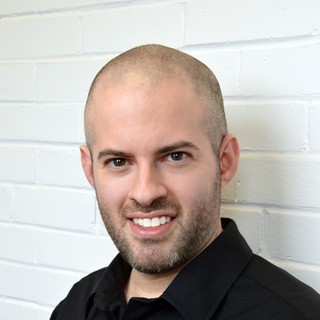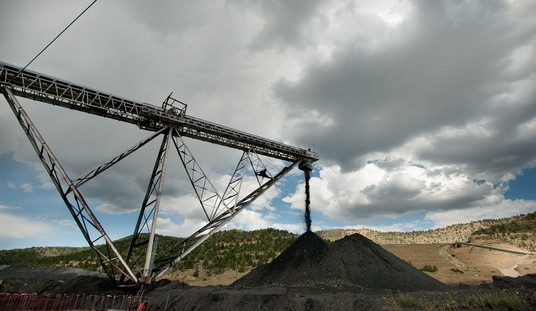Writing for the American Thinker, Jack Cashill notes that for all the criticism Robin Pogrebin and Kate Kelly have received (and justifiably so) for their New York Times article and their book, The Education of Brett Kavanaugh, one major oversight has received far less attention than it should.
Two main problems with the article that have received attention were the omissions that the alleged victim of the new assault described in the book has no memory of the incident—a significant detail that the Pogrebin and Kelly claim was accidentally left out of the article because of an editing error, and that the source of the new allegation, Max Stier, is not only a Democrat but also represented President Bill Clinton after Paula Jones accused him of exposing himself to her. But, the “great oversight” of The Education of Brett Kavanaugh, Cashill notes, actually has to do with Christine Blasey Ford.
“We found Dr. Ford’s allegations credible during a 10-month investigation,” Pogrebin and Kelly wrote. Cashill writes that the authors “chose not to look at the evidence” that “stared them in the face.”
On July 6, 2018, as Pogrebin and Kelly report, Ford contacted the Washington Post tip line with this message, “Potential Supreme Court nominee with assistance from his friend assaulted me in mid 1980s in Maryland. Have therapy records talking about it.”
It was not until September 16 that the Washington Post reported Ford’s allegations in full. The Post’s Emma Brown wrote, “Speaking publicly for the first time, Ford said that one summer in the early 1980s, Kavanaugh and a friend — both stumbling drunk, Ford alleges — corralled her into a bedroom during a gathering of teenagers at a house in Montgomery County.”
Pogrebin and Kelly choose not to cite this quote and for good reason. It makes the heroine of their story look like a con artist. In July, Ford was telling Brown that the incident took place in the “mid 1980s.” By September, Ford had moved the time of the attack up to the “early 1980s.” The timing mattered.
According to Christine Blasey Ford’s therapist’s notes, Ford claimed she was in her “late teens” when she was assaulted and that there were four boys involved in the assault, all of whom became “highly respected and high-ranking members of society in Washington.” The discrepancy between this and her testimony is explained away as an error in the therapist’s notes—which is a very improbable explanation.
At some point, two major elements of Christine Blasey Ford’s story changed: The approximate year of the assault and the number of boys who participated in the assault. Why did the timeline and the details change? Jack Cashill points to Mark Judge’s memoir, Wasted: Tales of a Genx Drunk.
Mark Judge was Brett Kavanaugh’s friend, and the other alleged assailant, according to Christine Blasey Ford. In 1997, Judge published a memoir (which can still be purchased on Amazon) that described the drunken escapades of his teens. Cashill believes that Judge’s book prompted Ford and those handling her to change the timeline and details of the assault in order to link Kavanaugh to the incident. While Ford couldn’t remember many important details of her assault, elements of her testimony mirrored details of Judge’s book—including the detail that Mark Judge was working at Safeway, and that when Ford allegedly saw him the day after the assault, he “looked a little bit ill.” Cashill writes, “it was Judge himself who provided the ‘looked a little bit ill’ detail. This is not something Ford would have remembered 35 years later.”
At the time, The Washington Post actually claimed that Mark Judge’s memoir “validated” Christine Blasey Ford’s timeline of the alleged assault. “Judge’s book not only suggests that the summer of 1982 was probably the period during which the alleged incident occurred but also makes the likelihood that he was heavily intoxicated — as Ford has claimed — greater,” wrote Phillip Bump, national correspondent for the Post. Perhaps he got that in reverse.
What virtually everyone in the media failed to acknowledge is that Ford changing the timeline of the assault from the “mid-1980s” to the “early 1980s” generated one of the most significant plot holes of her story: how she got to and from the party. In the summer of 1982, the revised year of the alleged assault, Christine Blasey Ford was too young to drive and would have needed transportation to and from the party. She was unable to say who brought her there and who took her back home. The likely explanation for this is that had the assault occurred in the mid-1980s like she told her therapist, she’d have been old enough to drive, and by her own testimony, “once I did have my driver’s license, I liked to drive myself.” Revising the timeline of her assault with the details of Judge’s book was the only way to plausibly link Kavanaugh with the party.
There are three other recent revelations that shed even more light on this deception. First, that Leland Keyser, Christine Blasey Ford’s best friend at the time (who was named by Ford as a witness) says she was pressured by Ford’s allies to publicly back Ford’s story. The next is that Ford’s attorney said that Ford was partly motivated to by a desire to defend Roe v. Wade. Lastly, Christine Blasey Ford’s father reportedly supported Brett Kavanaugh’s nomination, likely meaning even he didn’t believe his daughter was telling the truth. It should be obvious to anyone that “credible” does not describe Christine Blasey Ford, her allegations, or Robin Pogrebin’s and Kate Kelly’s book—which didn’t care to thoroughly and objectively examine Ford’s claims.
(This post has been updated with additional information)
_____
Matt Margolis is the author of Trumping Obama: How President Trump Saved Us From Barack Obama’s Legacy and the bestselling book The Worst President in History: The Legacy of Barack Obama. You can follow Matt on Twitter @MattMargolis










Join the conversation as a VIP Member